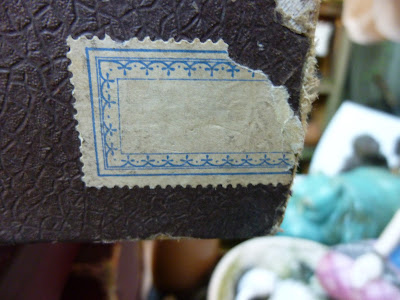Pianola's het boek van de Nederlandse Pianolavereniging jaren 80
Gershwin used to play and learn to play piano on the pianola. A strange automate pneumatically driven and guided by a paper roll with punched squares in it. A friend used to work for a bank and they used punched cards for transferring money, salaries et cetera. Computing the keys through mechanisms. Even Bender and Steinway producedthe double useable piano-la.
The scrolls are held in small rectangular boxes, often with a date stamp in it, and the name of the manufacturer and the prohibitions of using it. They were often rented. Nowadays we are often only inclined to think of the early honkeytonk Western movies music. I bought a large box full of classical pianola rolls, some were even played in by the famous artists himself. The romance of the countrysides and of Indians versus cowboys and strange countries and beliefs. Patriotism spread through marsh melodies and anthems.
Mostly the rolls are not really punched well, honkeytonk, robotlike stampeding keys instead of tenderly playing them. In this collection stretching from 1905 to 1925 however, there is a high quality. The composers often wanted to program the format by playing it firstly themselves for they wanted to be sure that their music sounded well and as it should sound.
A whole industrie is working behind it and for some part still does.
You can even buy Abba’ s Waterloo on a pianolaroll. There are musea all over the world. Museum of Technology Canada, Pianola museum Amsterdam. Almost all great pianobuilders of pianola makes, still are existing.Springing into the modern music eye is the company that still exists Q.R.S.
The Entertainer/Joplin, Schubert/Die Forelle, Sousa/Invincable Eagle, Waldteufel - Dolores Waltz Op.170, VALSE CHALOUPÉE Apach's Dance sur des motifs de J. Offenbach (Ch. Dubourg), to name a few, Strauss/Hungarian dance, et cetera.
Brandnames; C.C.Bender, Universal, Aeolian London, Choralion Berlin, Themodist-Pianist-Wilhelm Spaethe, C.R.S
The boxes are different, one you can open by pulling a red string, others are just plain boxes, printed on the scrolls in 4 languages how to use and not abuse it; simply lay the ring on the catchnotch after putting the roll in the cylinder holder of the pianola and go. Some are driven with electrical pumps and some you will have to push by peddling with your feet, not unlike an old church harmonium-organ.
Most scrolls are Sealed with a wire. The beginning of the roll is thicker paper often waxed,
probably to prevent sour and fat to set in on the thin white sheet. Sometimes the melodies are printed on the start of the sheet too. Sometimes the black disks at both sides are sealed with a flower like finishing ring. On some boxes at both ends is a label with the composer and title on it, mostly on only one side. Often a label is stuck on to the area above the attach notch ring of the roll. They weigh , depending on the duration of the play, one kilo to 100 grams.
Shellack 78rpm disks were just appearing on the market. These rolls with classical music performed in a higher end niche of the fresh then market are special and of a rare quality. Though most rolls were issued in large quantities, it was not for everyone to have. In opera, Concert buildings. Conservatoria, chique restaurants however they were commonplace.
I hope you enjoyed this small introduction, thanks for reading.
Madrason, ; s-Hertogenbosch, 23-06-2022.
Below, Hungarian Dance, Brahms.
Steinway pianola
How a Pianola works.
How the scrolls, rolls are made;
https://www.pianola.nl/Pianola_Museum/Homepage.html
#FINIS
.JPG)
.JPG)
.JPG)
.JPG)
.JPG)























































































.JPG)
.JPG)
.JPG)
.JPG)
.JPG)
.JPG)
.JPG)
.JPG)
.JPG)
.JPG)
.JPG)


%20-%20YouTube.png)


.JPG)
